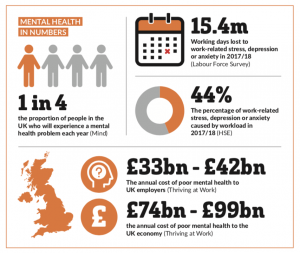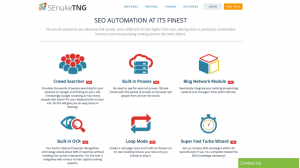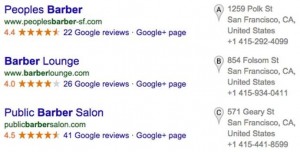
That’s right, lead lists suck. Too many marketers look at lead lists as “necessary evils.” But I’m here to tell you there’s a better way.
Let’s say you’re selling car insurance. People who are actively looking for new insurance policies fill out forms online and get placed on lead lists. They most likely want information as soon as possible, but the lead list might only fall on your desk two months down the line.
Now, they’ve already found a new policy, and they’re super annoyed at your phone calls. In fact, they’ve probably been receiving phone calls for the past two months from other companies who bought that lead list.
That’s the big issue with buying lead lists for cold calling. They’re full of contacts that are outdated and no longer interested. The solution is to reach your prospective customers when they’re most interested, and that’s where live inbound leads can help.
The Problem With Lead Lists
Buying a list of seemingly qualified customers may sound like a great idea, but what you don’t always know is how long ago those people actually showed interest in similar product or services.
You also don’t know how many times a list of contacts has been resold and recycled. The leads on the lists you’re purchasing might not be exclusive to you.
Plus, if you’re buying leads on a list, they’re outbound leads, which means you have to call all of them. Of those leads, only 1.7% of outbound leads actually convert. It takes extra manpower and time to make that even remotely successful, which is something that most businesses don’t have.
The Contacts Could Be Outdated
Say you’re an insurance company looking to acquire new clients, so you buy a list of people who have all filled out inquiry forms online about auto insurance. But for all you know, the majority of the people on the list inquired about auto insurance over six months ago, and have already been called by multiple other insurance companies. Chances are, they’ve already settled on a new insurance plan, or they’re completely tired of being called again and again by insurance companies.

Source: Quickmeme
You have no idea if this is the case when you purchase a lead list, but if it is, that means you’ve spent hundreds buying old leads. These leads will not only never convert, but you’ll be putting in a lot of time and effort to call each lead before you finally figure that out.
If you’re purchasing cold calling lists specifically for B2B sales, you’re also at a disadvantage. Once again, you don’t know how old the list is, and there’s a very good chance the contact information could be outdated. The person on your list could have quit or been promoted. And you don’t know if you’re actually buying the contact information for the decision maker, which is who you really need to talk to.
Sure, a lead list might seem like a great deal at the time. They’re generally inexpensive and only cost $ 0.10 to $ 3.00 a lead. But if you keep buying hundreds of those, you’re still wasting a good chunk of money.
You Could Damage Your Company
Telemarketer. That’s probably a word that makes you cringe. If you’re buying lists with hundreds of leads on them and just calling each one without any preface or previous conversation, guess what? You’re just as cringeworthy as those telemarketers who pester you with calls at dinnertime.

Source: Memegenerator
Whether you’re a B2B company or a B2C, nobody really likes being called out of the blue. Essentially, you’ll be annoying people by trying to get business from them that you haven’t earned.
When you’re cold calling a potential customer, you’re asking for their business when they’ve never actually shown interest in your company; they’ve only expressed interest in your type of service or product.
Not only could lead lists damage your credibility by annoying potential consumers, but there’s also a legal aspect to lead lists that could be risky for your company. If you’re purchasing outdated contacts, you may find yourself accidentally violating compliance rules.
Plus, most people are on “Do Not Call” lists, so even if they technically agreed to be contacted by filling out an online form, the chances of them actually wanting to talk to you are slim, especially if it’s months after they inquired.
Lead Lists Have a Low Conversion Rate
With all the potential issues that come with purchasing a lead list, this means that they ultimately have very low conversion rates. The names on the lists aren’t exclusive to you, and chances are those potential consumers don’t want an unsolicited phone call from yet another business.

Source: Kappit
In this day and age, cold calling is outdated. It’s annoying, ineffective, and frankly, it’s a waste of money. They are inexpensive, and that can be tempting, but I’m sure you’ve heard the saying: You get what you pay for.
The Solution? Live Inbound Calls
Pay per call advertising works much differently than lead lists. Instead of just purchasing stagnant names in a document, you’re buying inbound calls that are coming to you in real-time. In other words, you’re getting connected with the potential consumer immediately after they fill out an inquiry form online.
What’s the Difference?
It’s usually a matter of minutes (not months) after the prospective customer initially fills out a form before they’re contacted by a call center and filtered through to your business after being pre-qualified.
The exclusivity and prequalification process is what makes live calls so much more successful than leads on a cold calling list. The customers have already been vetted out and matched with your company, so they’re automatically so much more likely to convert.
When you’re connected to a consumer who is still actively searching, you’re talking to someone who is beyond just the interest stage of the sales funnel. They’re informed and ready to take action.
Plus, those calls are exclusive to you. You’ll know those customers haven’t hit the call fatigue wall just yet, because you’re the first person they’re talking to.
How Does It Work?
When a consumer fills out an inquiry form online, that information is sent to a call center, which then calls the consumer. Then, the call center sorts and prequalifies the consumer in order to transfer them to the most relevant business.
So, by the time your phone rings, it’s already been predetermined that the consumer is a good match for what your company has to offer. Cold calling from a list only has a 1-3% success rate for even getting an initial appointment. But live inbound calls have a conversion rate of 30-50%.
However, unlike lead lists, the average cost of calls is anywhere from $ 25-$ 35 for quality calls. But the good news is you only pay when the phone rings.
Business & Finance Articles on Business 2 Community(59)
Report Post





